Centrifugal Pump, Ansys Fluent CFD Simulation Training
$100.00 Student Discount
- The problem numerically simulates Centrifugal Pump using ANSYS Fluent software.
- We design the 3-D model by the Design Modeler software.
- We Mesh the model by ANSYS Meshing software, and the element number equals 3649835.
- We use the Frame Motion to define the rotational movement.
To Order Your Project or benefit from a CFD consultation, contact our experts via email ([email protected]), online support tab, or WhatsApp at +44 7443 197273.
There are some Free Products to check our service quality.
If you want the training video in another language instead of English, ask it via [email protected] after you buy the product.
Description
Description
In this project, a flow inside a centrifugal pump has been simulated, and the results have been investigated using ANSYS Fluent software. We perform this CFD project and investigate it by CFD analysis.
The present model is designed in 3-D using the Design Modeler. The geometry is related to a centrifugal pump, so several blades are designed in the central zone of this pump.
The fluid enters from the outside of the pump and, after rotating around the blades, exits axially from the center of the pump.
The meshing of this present model has been generated by Ansys Meshing software. The total cell number is more than 3649835.
Centrifugal Pump Methodology
The present problem is the flow simulation inside a centrifugal pump via ANSYS Fluent. In general, pumps are industrial equipment that causes fluids to move from one part to another using mechanical action.
Pumps are classified into two main categories: dynamic and positive displacement pumps. There are different types of dynamic pumps, one of the most common of which are centrifugal pumps.
The operation of centrifugal pumps increases the fluid pressure from the inlet to the pump’s outlet, causing the fluid to move. The force that creates this pressure is supplied by an electric motor that rotates the impeller.
The fluid in this pump enters the center of the impeller and exits the edge of its blades. So the centrifugal force increases the velocity and kinetic energy of the fluid.
In this project, the pump consists of three main parts; The central blades are defined as a solid body, and the casing around the pump is defined as the fluid passage. A distinct central zone is defined for the fluid section so that the rotational motion of the pump blades can be applied to it.
Therefore, for this central fluid zone, the frame motion method is used, and the rotational speed value of 1500 rpm is defined; This means that the fluid rotates around the rotating blades at this speed.
Also, water flow enters from the pump’s inlet port with a speed of 140 m/s radially and exits axially in the central part of the pump with a relative pressure of 0 pascals.
Moreover, the SST k-omega model is used to solve turbulent fluid equations due to its advantage in accurately predicting flow patterns near and far from the walls.
Centrifugal Pump Conclusion
The contours show that the pressure increases radially; By increasing the pressure from the pump’s central part to the periphery.
Also, due to the rotational motion of the pump in the central part, you can see the maximum speed in this part and the maximum value of the pressure difference or pressure gradient.
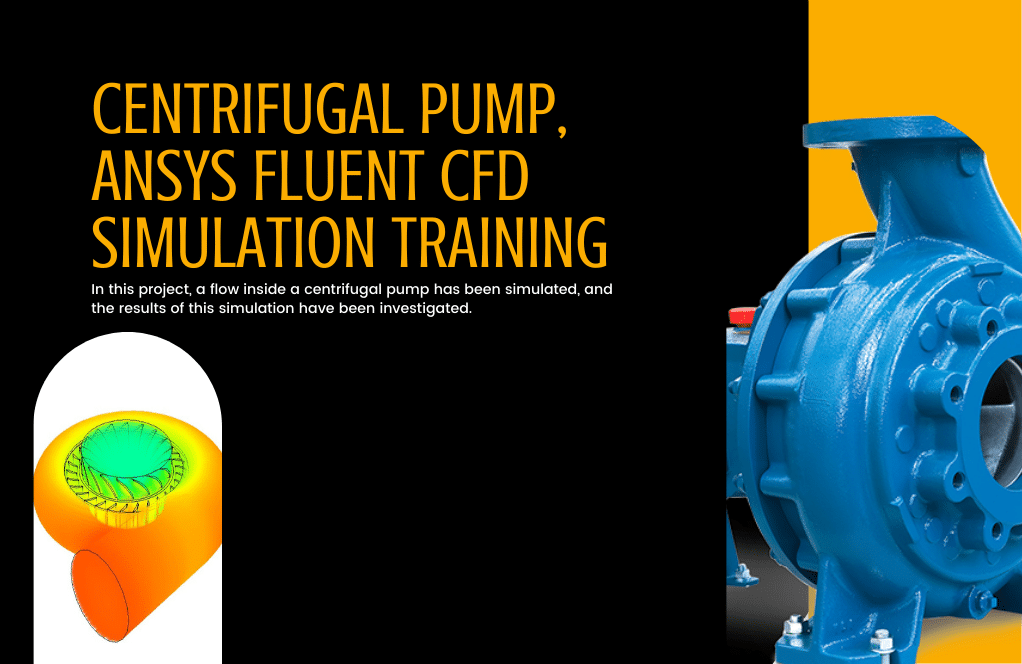
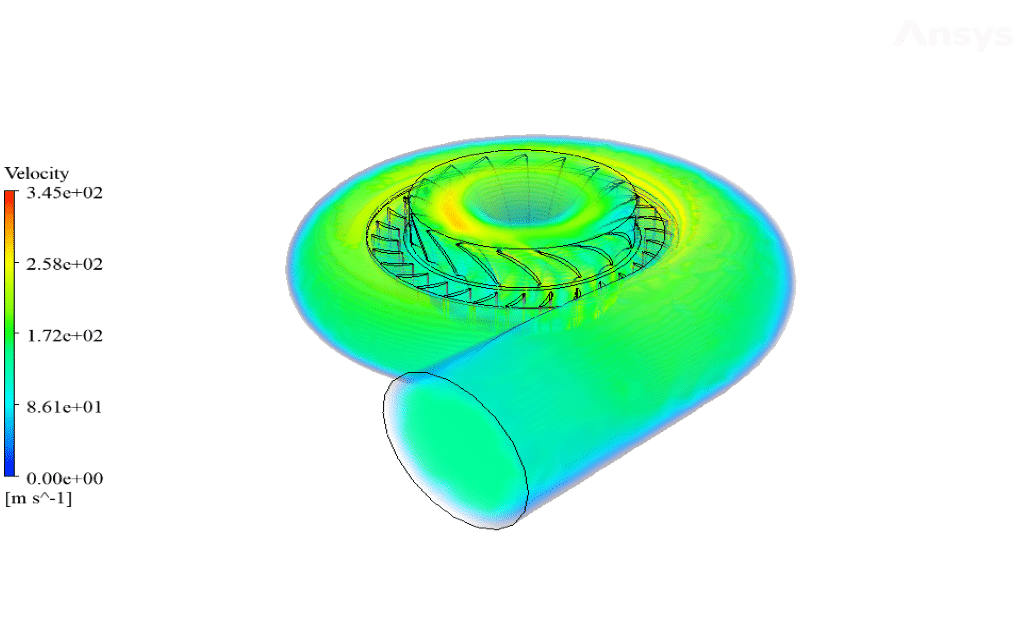
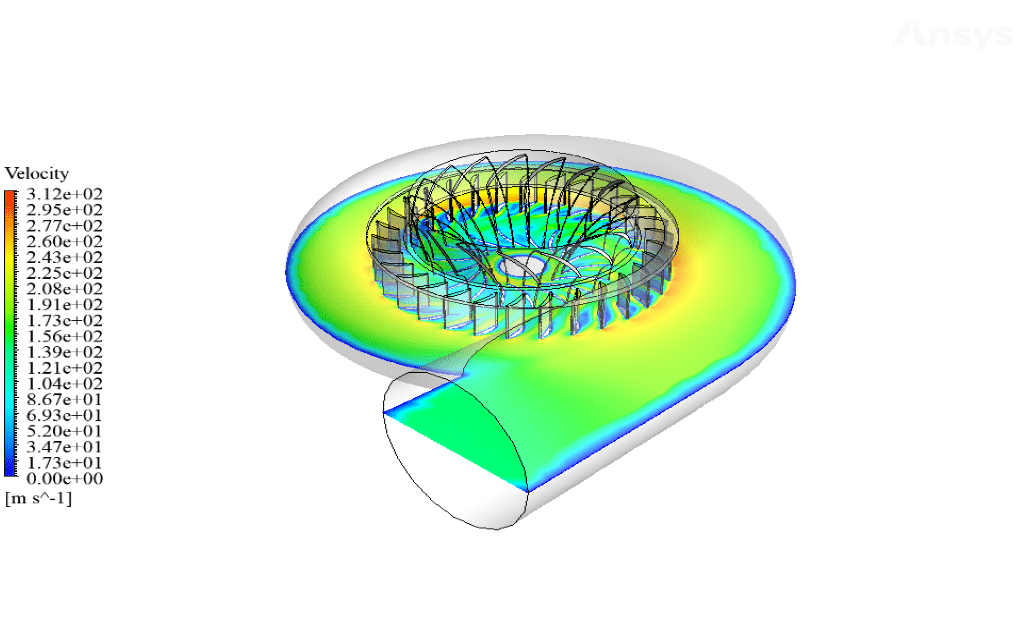
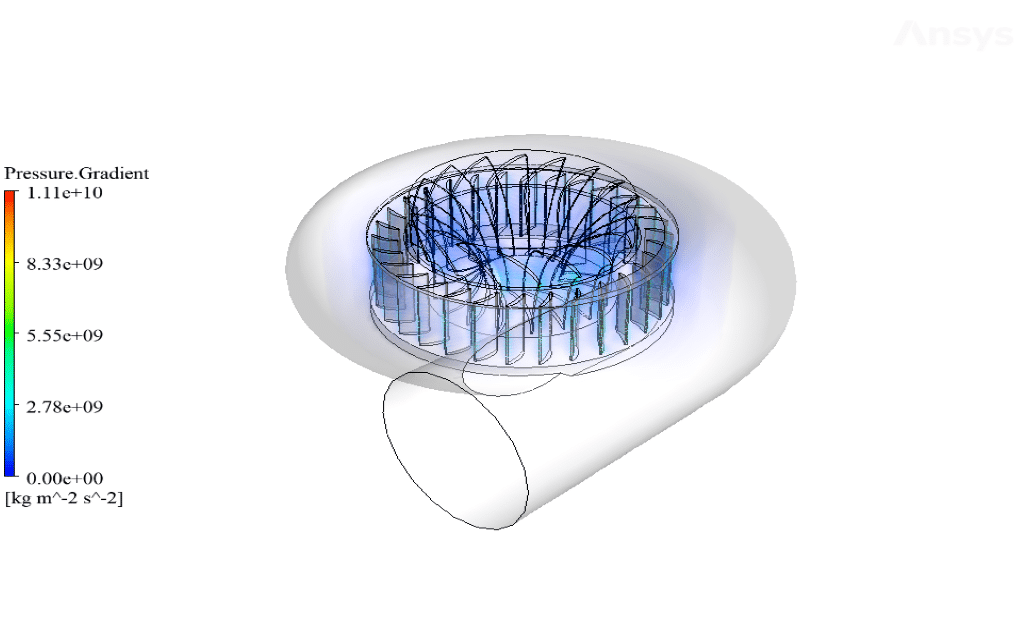
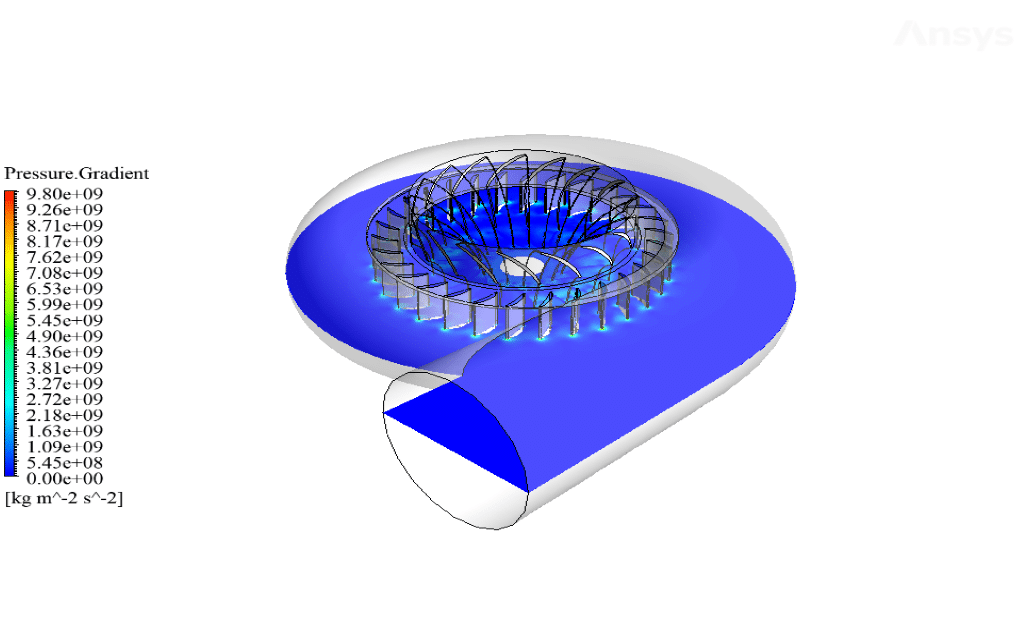
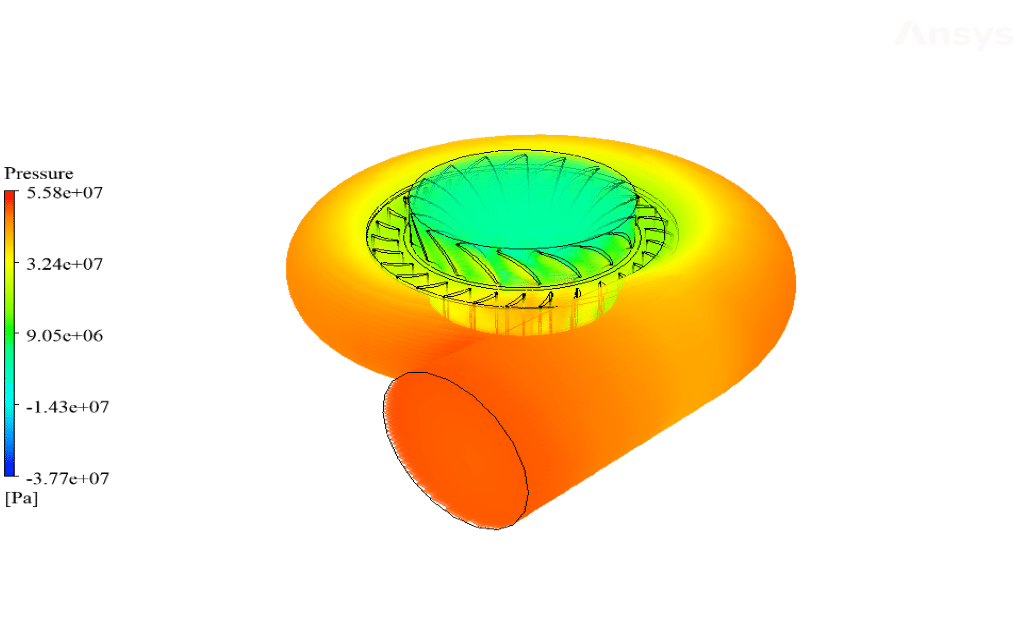
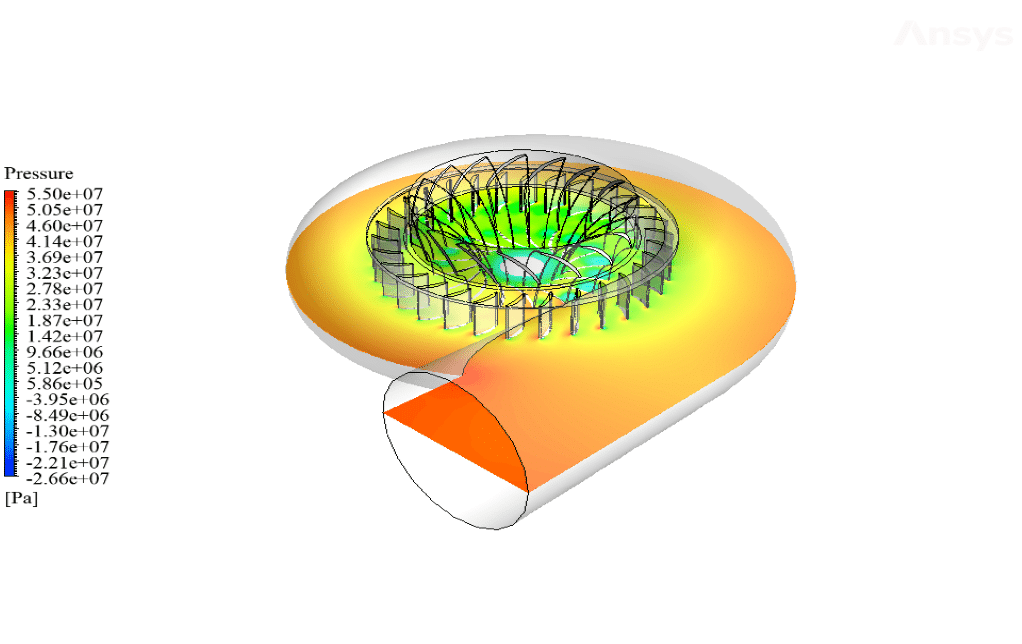

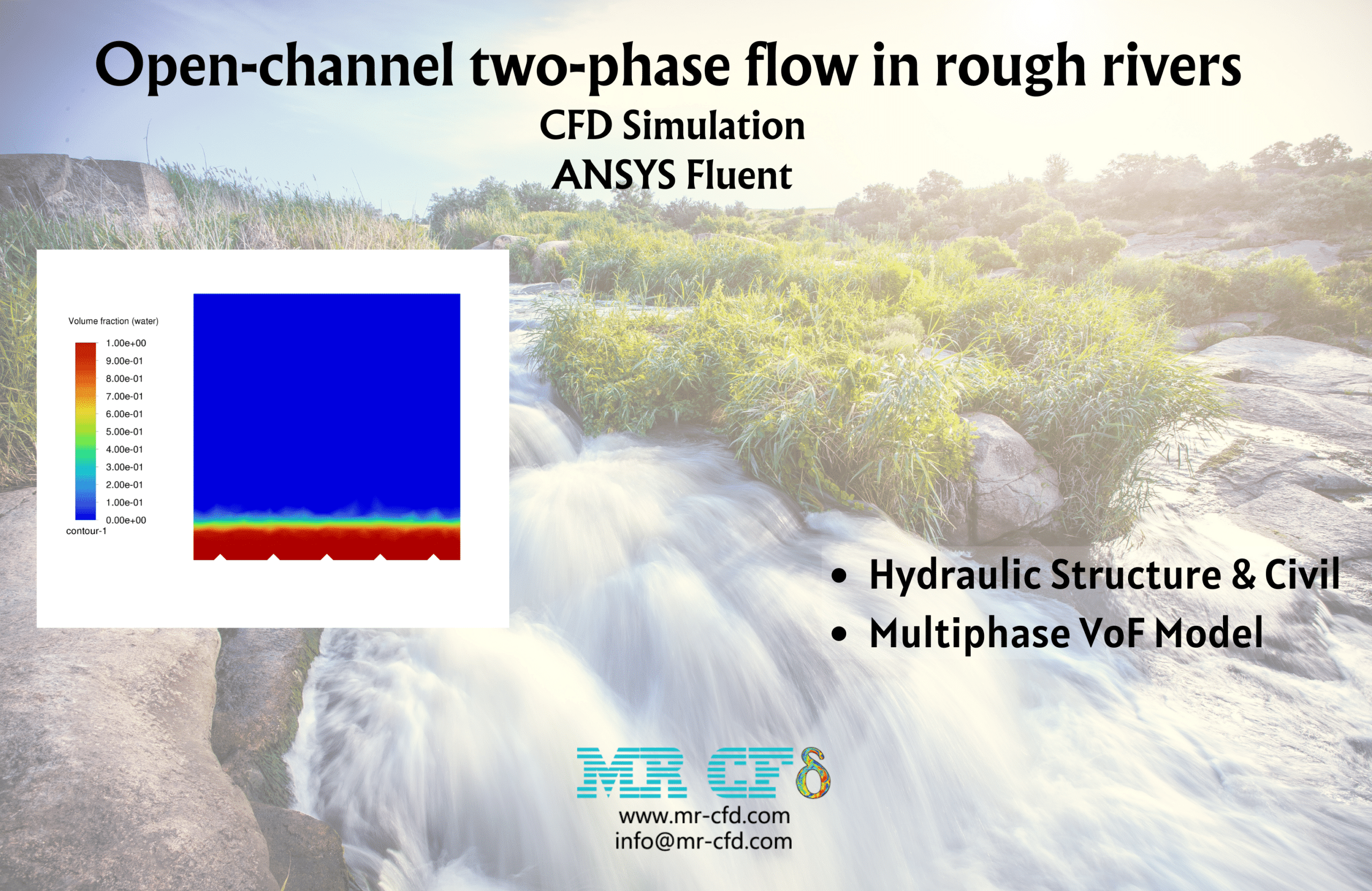
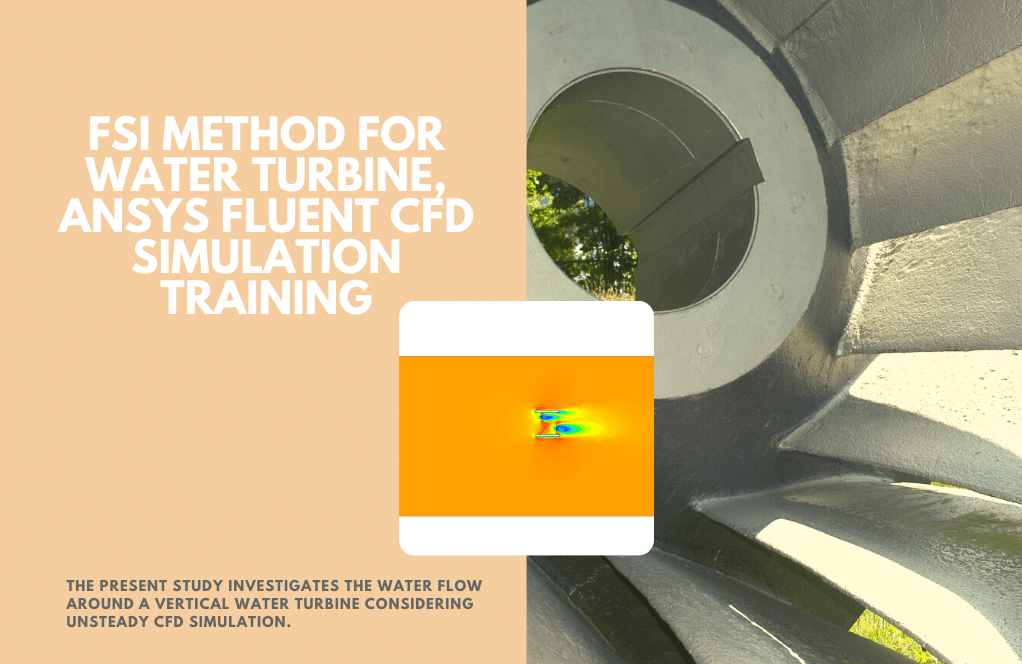
Donato Kilback –
Does the training include any material on the effect of pump design on its performance?
MR CFD Support –
Yes, it does. The training includes a section on the influence of pump design on its performance. This is crucial in optimizing the pump design for specific applications.
Noble Dooley –
The training content sounds comprehensive, but can I also learn how to analyze the cavitation phenomenon in this centrifugal pump simulation using Ansys Fluent?
MR CFD Support –
Unfortunately, the training does not explicitly mention the analysis of cavitation phenomena. However, Ansys Fluent does have the capability to simulate cavitation. For proper guidance on cavitation analysis in centrifugal pump simulations, additional learning material or support from an expert might be required.
Ms. Madge Gislason –
Can it help me understand the impact of different operating conditions on the pump performance?
MR CFD Support –
Absolutely. The training includes exercises that explore the impact of different operating conditions, such as flow rate and head, on the pump performance.
Nick Hudson –
I found the CFD simulation training for the centrifugal pump incredibly detailed, especially the part about the frame motion method for the rotating blades. Really helped me understand the dynamic aspect of pump simulations in ANSYS Fluent!
MR CFD Support –
Thank you for your kind words! We’re thrilled to hear our training on the centrifugal pump and the frame motion method provided clarity and helped deepen your understanding of pump simulations in ANSYS Fluent. If you have any more questions or need further training, please let us know!
Darian Keeling –
Does this training cover the simulation of both the impeller and the volute of a centrifugal pump?
MR CFD Support –
Absolutely, Shima. The training includes exercises that simulate both the impeller and the volute, giving you a comprehensive understanding of the entire pump system.
Malcolm Tromp II –
I’m amazed at the realistic function of your simulation – it captures the complexity beautifully! Can I visualize the flow path of the fluid during the entire process in the simulation results?
MR CFD Support –
Yes, within the simulation results obtained from ANSYS Fluent, you can visualize the flow path of the fluid throughout the pump. You will be able to see streamlines or pathlines that illustrate the flow’s trajectory from the inlet to the outlet, highlighting the effects of the impeller and the dynamic changes in velocity and pressure.
Hoyt Runte –
I’m really inspired by the complexity of the Centrifugal Pump simulation in ANSYS Fluent. The attention to detail, from designing the blades to defining the motion of the central zone, showcases a high level of expertise. The use of over 3.6 million cells for meshing seems like it would provide extremely accurate results in predicting fluid behavior!
MR CFD Support –
Thank you so much for such positive feedback! We take great pride in ensuring our simulations are as detailed and accurate as possible to provide valuable insights and predictions about fluid dynamics in real-world applications. We’re thrilled to hear that you recognize and appreciate the complexity and depth of our simulation work. Your support is incredibly motivating for our team!
Mrs. Deja Rau –
I want to simulate cavitation in centrifugal pumps. Does the training cover that?
MR CFD Support –
Yes, indeed. The training includes exercises that delve into the simulation of cavitation. This is particularly important in pump design as cavitation can significantly affect the pump performance and lifespan.
Demarco Lowe –
This training course sounds fantastic! The level of detail in explaining the simulation of the centrifugal pump is exemplary. I was truly able to visualize the workings of the pump and the associated increase in fluid velocity and pressure due to the impeller. Additionally, the use of the SST k-omega model for improved prediction of turbulent flows adds tremendous value.
MR CFD Support –
Thank you for such a wonderful review. We’re thrilled to know you appreciated the detail and explanations provided in the Centrifugal Pump CFD Simulation Training. It’s always encouraging to receive feedback that our efforts to convey complex concepts in a clear and understandable manner are successful!
Fred Rodriguez –
I just finished your training module on Centrifugal Pump CFD Simulation and all I can say is, impressive! The step-by-step guidelines made it incredibly easy to follow along, even with the complex physics involved. The results also matched perfectly with my expectations!
MR CFD Support –
Thank you for your positive feedback! We’re thrilled to hear that the training module met your expectations and that you found the step-by-step instructions helpful. Your success is what drives us to create detailed and reader-friendly courses. Don’t hesitate to reach out if you have any more comments or need further assistance.
Mrs. Vicky Hills –
The fluid dynamics inside this centrifugal pump sound fascinating! The transfer from axial inflow to radial discharge due to the blades’ action and the flow characteristics captured by the simulation is impressive. Great job visualizing such a complex system!
MR CFD Support –
Thank you for your positive feedback! We’re delighted to hear that our CFD simulation of the centrifugal pump was able to effectively visualize the fluid dynamics and provide a clear understanding of the internal flow behaviour. If you have any further questions or require additional insights, please do not hesitate to reach out.
Prof. Curt Nader –
I found the level of detail in the centrifugal pump simulation impressive. The visualization in the results helps in understanding the flow behavior excellently.
MR CFD Support –
Thank you for your positive feedback on our centrifugal pump simulation training product! We’re delighted to hear that you found the detailed simulation and visual results useful for grasping the flow behavior. We always strive to present complex engineering concepts in an accessible way. If you have further questions or need assistance with another CFD topic, feel free to reach out!
Leilani Pouros –
How does the training handle the complexities of turbulent flow in a centrifugal pump?
MR CFD Support –
The training includes a comprehensive section on simulating turbulent flow. It covers the different turbulence models available in ANSYS Fluent and helps you choose the best one for your simulation.
Tania Kreiger –
I love how detailed the Centrifugal Pump CFD Simulation training is! It provides clear insights into the flow behavior within the pump.
MR CFD Support –
Thank you for your positive feedback! We are delighted to hear that our Centrifugal Pump CFD Simulation training met your expectations and provided valuable insights. Your satisfaction is our top priority!
Krystal Torp –
Just wanted to say this project increased my understanding a lot! The simulation details, especially the impeller’s interaction with the fluid and the handling of the rotational motion and the pressure changes, were explained very clearly in the training. Thanks for a great learning tool!
MR CFD Support –
We’re thrilled to hear our Centrifugal Pump simulation training was able to enhance your understanding so effectively! Your positive feedback is greatly appreciated, and we’re glad to know the details and explanations met your expectations. Thanks for choosing our learning poroducts!
Baron Bayer –
I’m amazed by the level of detail in your report. The interplay of pressure and velocity inside the centrifugal pump was particularly interesting to visualize. Well done on realizing such in-depth analysis and creating an effective simulation!
MR CFD Support –
Thank you very much for your positive feedback! We’re thrilled to know that you appreciated the intricate details of our centrifugal pump simulation. Our goal is always to deliver comprehensive analyses that genuinely assist in understanding complex flow phenomena. If you ever have more questions or need further assistance, please don’t hesitate to reach out to us!
Ara Abernathy –
Wonderful training material! The centrifugal pump simulation gave me clear insights into the inner workings and flow dynamics. I was particularly impressed by how the pressure and speed contours were presented, showing the effects of the impeller’s rotation vividly. The SST k-omega model explanation was very helpful in understanding turbulence modeling. Thanks, MR CFD!
MR CFD Support –
Thank you for your enthusiastic review! We’re glad to hear that our Centrifugal Pump CFD Simulation Training provided you with a clear understanding of the pump’s mechanics and fluid dynamics. Should you have any further questions or need more in-depth tutorials, remember that we’re here to help!